Magazine | Analyses
Comment expliquer l’arrivée d’un Guillemot à cou blanc en Finlande en novembre 2021 ?
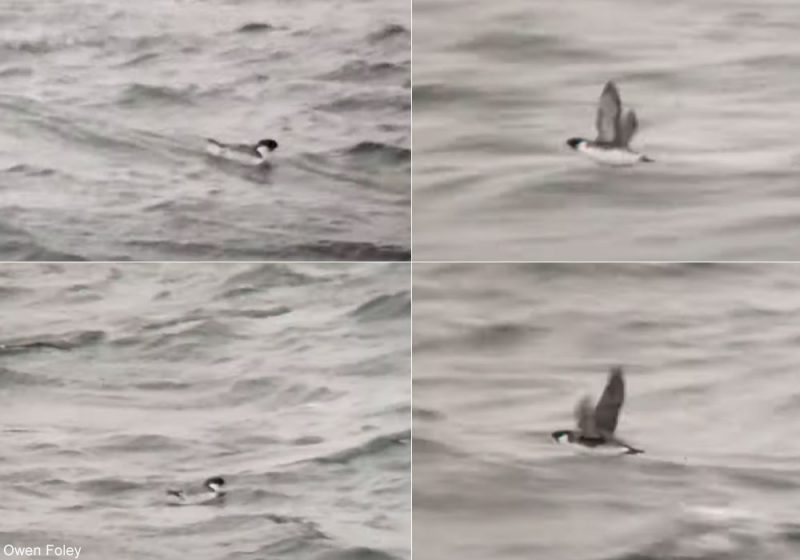
Guillemot à cou blanc (Synthliboramphus antiquus) filmé depuis la péninsule de Porkkala, dans la commune de Kirkkonummi (Finlande), le 9 novembre 2021. Notez le capuchon noir, le ventre, la poitrine et les côtés du cou blancs, le dos gris, le dessous des ailes noir et blanc, et le bec très court (à peine visible).
Photographies (extraites d’une vidéo) : Owen Foley
Introduction
Alors qu’il suivait la migration d’automne depuis la péninsule de Porkkala près Helsinki (Finlande), Mika Teivonen a repéré le 8 novembre 2021 un Guillemot à cou blanc (Synthliboramphus antiquus), un petit oiseau marin nichant sur des îles de l’océan Pacifique Nord, du sud-ouest de l’Alaska au nord de la Chine. Il l’avait d’abord confondu avec un Mergule nain (Alle alle), mais son petit bec pâle, son dos gris et sa tête noire ont permis de l’identifier. Il n’est pas resté longtemps, permettant toutefois à quelques dizaines d’observateurs de la « cocher ». Cette observation est seulement la seconde donnée confirmée pour l’Europe, la première étant celle d’un oiseau ayant estivé sur les côtes de l’île de Lundy dans le Devon (Grande-Bretagne) en 1990, 1991 et 1992.
Après une présentation de cet alcidé, nous évoquons sa biologie et les explications possibles de son arrivée en Europe, avec notamment l’impact possible de la fonte de la banquise à cause du réchauffement climatique.
Nous remercions Owen Foley pour sa vidéo.
Abstract
While spotting the autumn migration from the Porkkala Peninsula near Helsinki (Finland), Mika Teivonen found on the 8th of November 2021 an Ancient Murrelet (Synthliboramphus antiquus), a small seabird nesting on islands in the North Pacific Ocean, from southwest Alaska to northern China. He had initially been mistaken for a Little Auk (Alle alle), but his small, pale beak, gray back and black head made it possible to identify him. It did not stay long, however allowing a few dozen birders to twitch it. This record is only the second confirmed for Europe, the first being that of a bird having summered off the Lundy island in Devon (Great Britain) in 1990, 1991 and 1992.
After a presentation of this alcid, we present its biology and the possible explanations for its arrival in Europe, with in particular the possible impact of the melting of the sea ice due to global warming.
We thank Owen Foley for his video.
Poursuivez la lecture de cet article, en vous abonnant dès maintenant !
Découvrez les Archives d’Ornithomedia.com
Pour seulement 10,00 €TTC/an (ou 6,00 € les 6 mois)
Profitez de plusieurs centaines d’articles en accès illimité et sans aucun engagement.
Compléments
A visiter
La chaîne vidéo d’Owen Foley sur YouTube : www.youtube.com
Ouvrages recommandés
- Sibley Guide to Bords (seconde édition) de David Allen Sibey
- Alaska Extrême-Orient Russe 2015 de Collectif et Dominique Auzias
- Birds of East Asia (2009) de Mark Brazil
Sources
- Aleksanteri Pikkarainen (2021). Suomesta löytynyt superharvinainen mustakurkkumurri teki pikaisen katoamistempun. Italheti. Date : 9/11. www.iltalehti.fi
- Tiina Karopi (2021). Suomelle uusi lintulaji bongattiin Kirkkonummella – mahdollisesti vasta toinen mustakurkkumurrihavainto koko Euroopassa. Yle. Date : 09/11. yle.fi
- Robert H. Day et al (2014). Seabirds new to the Eastern Chukchi and Beaufort Seas, Alska: response to a changing climate? Western Birds. Volume : 44. Numéro : 3. arctichealth.org
- Andrew W. Kratter et Michael Brothers (2010). First record of Ancient Murrelet (Synthliboramphus antiquus) for Florida. Florida Field Naturalist. Volume : 38. Numéro : 3. Pages : 106-109. sora.unm.edu
- Anthony J. Gaston, Yuriko Hashimoto et Laurie Wilson (2017). Post-breeding movements of Ancient Murrelet Synthliboramphus antiquus family groups, subsequent migration of adults and implications for management. PLOS ONE. Date : 24/02. journals.plos.org




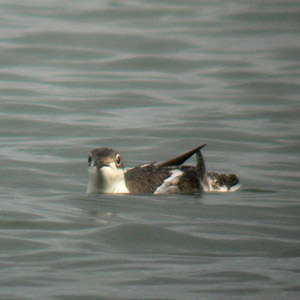
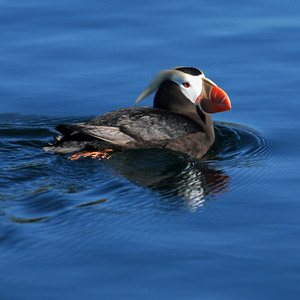
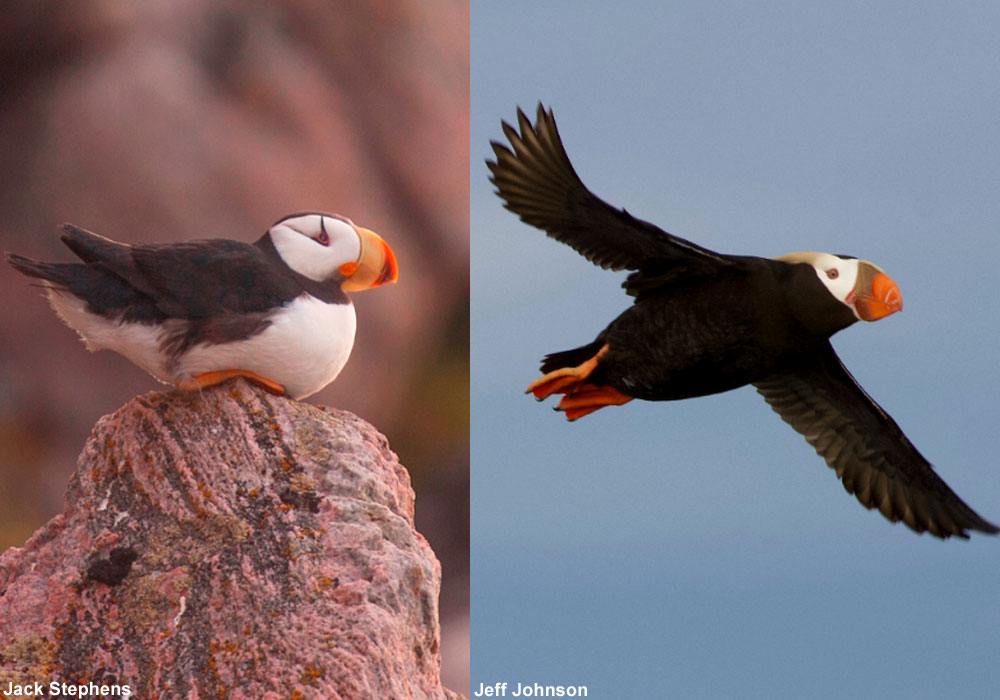
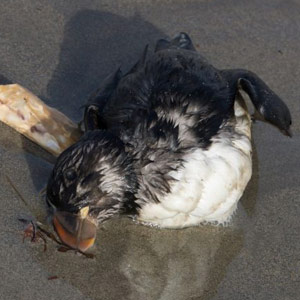
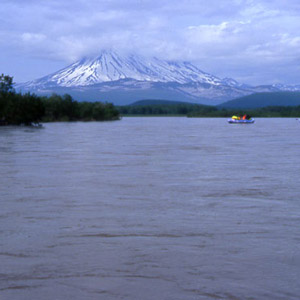
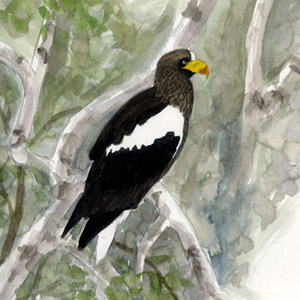
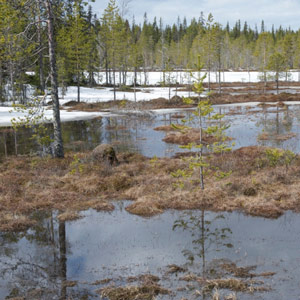
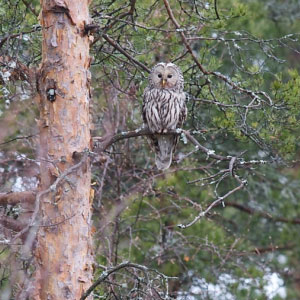
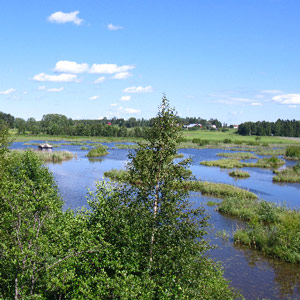
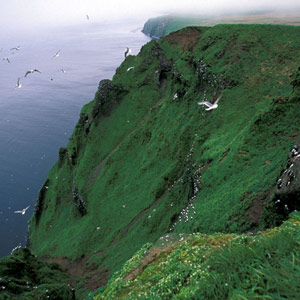

Aucun commentaire sur ce sujet
Participer à la discussion !